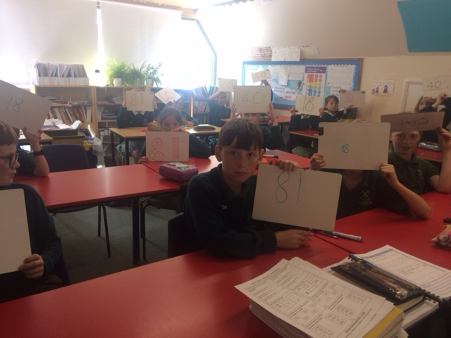Maths Challenge June 2019

By Zazie Mackintosh
Maths is one of my favourite subjects and yet it is guaranteed to elicit a groan out of most pupils. A conversation with a parent recently reminded me that many adults feel the same. Parents are often at a loss as to how to help a child who is struggling with Maths; I hope what follows might help in a small way.

I’m a big fan of the work of British-born Stanford University professor Jo Boaler. (If you have a spare 15 minutes, listen to her excellent interview on Radio 4’s The Educators). She believes every child has the potential to be an accomplished mathematician; there is no such thing as a ‘Maths brain’. Intelligence is not fixed (it is not genetic); it is developed. So do not say to your child ‘I was never any good at Maths – and I think you’ve got my brain’; the research shows this has an immediate and negative impact (particularly in the case of girls).
Jo Boaler promotes the idea of developing ‘number sense’. Put simply, this is an understanding of numbers and with that, the ability to manipulate them with confidence. It is the opposite of rote learning.
Here are two games we play in Form 3G to help develop number sense. They are ‘low-floor/high-ceiling’ activities so anyone can take part. (They are also an ideal activity for a long journey over the summer holiday!)
1. ‘The Odd One Out’: Choose three numbers and challenge your child(ren) to find an odd one out. For example, 18, 40 and 81. When I played this very game with the class recently, all three children in the front row chose a different number: one chose 40 because it does not include the digits 1 or 8; another chose 18 because it is the only number with ‘one ten’; the third chose 81 because it is an odd number. As the game progressed, we found 40 is the only multiple of ten. It is also the only number not in the nine (or three) times table. 81 is the only square number; 18 is the only number less than 20; 81 is the only number greater than 70; and so on.
2. ‘Number Sentences’: For example, 9 x 14 = ?. I encourage the children to use their ‘strategies’: for example, a pupil might be comfortable doubling, or multiplying by five or ten. So in this example, you could do 10 x 14 = 140, then 140 – 14 = 126. Or 9 x 10 = 90, and 9 x 4 = 36, then 90 + 36 = 126. You could also do 9 x 12 = 108 and 2 x 9 = 18, then 108 + 18 = 126.
The appeal of both games is that there is no single ‘correct’ answer; the challenge is to come up with a unique solution.
So here’s your starter for ten: 6, 49 and 103. Which is the odd one out?
Please share your answers on our Facebook, Instagram or Twitter and we will share them in class tomorrow!

